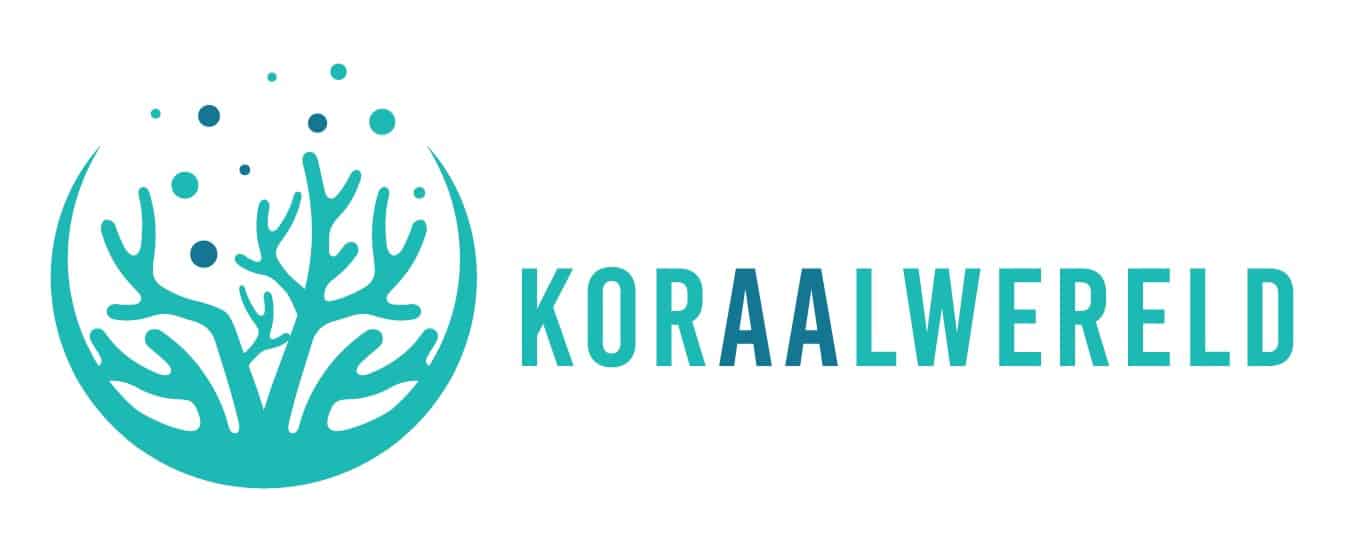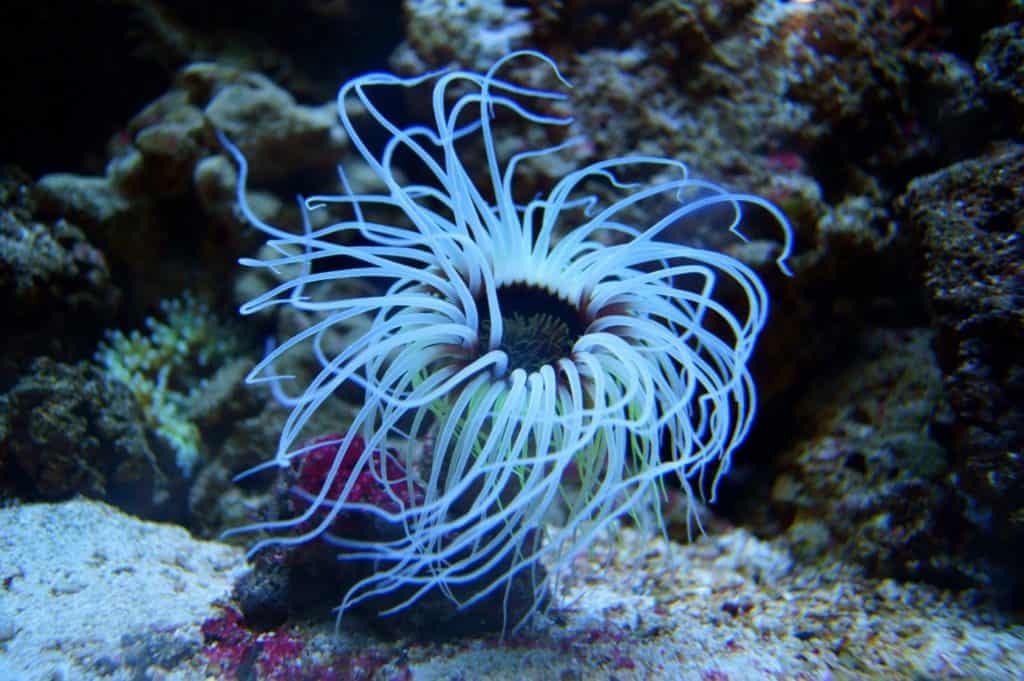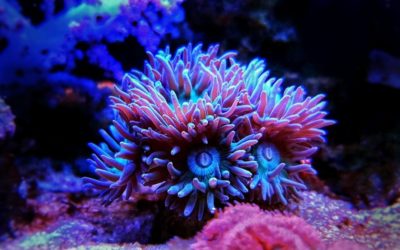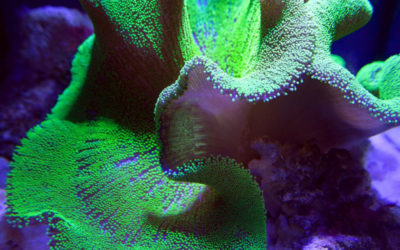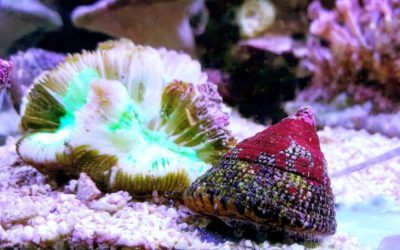Keeping an anemone in your marine aquarium
Anemones are among the most fascinating inhabitants of the ocean. The image of a beautiful anemone with a bunch of clown fish in it is well known to everyone. Anemones can be among the more challenging animals in an aquarium. Many require very specific conditions in aquariums. The temperature should be kept between 23 and 28 degrees. You can easily measure this with this digital thermometer . In addition, it is important that you keep the pH between 8.0 and 8.4. The pH is also easy to measure digital pH meter .
Anemones are Cnidarians, a group made up of corals and anemones. They have symmetry and tentacles with sting cells. They have a mouth in the middle. The anemone will either anchor itself to a hard substrate or bury its foot in sand.
The morphology of the anemone can vary depending on its adaptation to the habitat the anemone comes from. Most anemones live with symbiotic algae and several species are even symbiotic with animals such as clown fish. Not only clown fish can form a symbiosis with an anemone, but we also see many other animals such as crabs in symbiosis with an anemone!
Demanding
Anemones can have demanding parameters and will shrink or turn pale when conditions are not to their liking. They need optimum water quality and a high oxygen content.
The aquarium should be running and stable for some time, as any ammonia spikes can be disastrous. The most popular species are those that live in symbiosis with algae, so good lighting is a must. A lot of flow is also required so that the anemone gets enough oxygen and can get rid of waste. Also make sure that the inlets for pumps are shielded to avoid sucking in wandering anemones. When the anemones are sucked up and get stuck in the pump, it is often the end of the story. So you should try to avoid this at all times

The care and purchase of an anemone
It is important to check the anemone’s foot, as most of the physical damage occurs at the foot during capture. If there is evidence of damage, do not buy the anemone. He can easily die from an infection if the foot is damaged. Acclimatization should be very slow with the drip method. During this process, avoid removing the anemone from the water.
Some hobbyists deny that anemones need supplemental feeding, but others argue that supplemental feeding is necessary for health and to promote growth.
Many species do just fine without supplements when they can eat the leftovers that the fish won’t eat. Carpet anemones, however, should be fed, preferably twice a week. These anemones can also be aggressive, catching and eating fish or other animals in the aquarium.
Reproduction
Sex differences occur in many species and sexual reproduction can be used. Male and female gametes are excreted through the mouth. When these come together, fertilized eggs are formed. This in turn produces larvae that can swim around freely. These will eventually attach to the substrate and develop further here.
Asexual methods are also used to propagate anemones. Some species produce small replicas of themselves. Alternatively, binary division, where the anemone splits in half, can be used. This is a process that will take place automatically as the anemone grows. You can also do this yourself by cutting the anemone in half. However, this is not recommended, as this is harmful to the anemone and there is a chance that it will die.
What should you take into account?
Many anemones are added to existing aquariums filled with corals and other invertebrates. However, this is not always successful, as anemones can use ‘chemical warfare’ against other corals and congeners. They are also carnivorous which can cause small fish and other animals to be eaten.
Also keep in mind that many fish species naturally eat anemone tentacles. So never keep anemones with butterfly fish, large angelfish, trigger fish or large puffer fish. Careful choice of co-residents is therefore important. You should also keep in mind that anemones can move and sting other corals.
What species are available in the hobby?
Heteractis crispa, the Sebae anemone can reach a size of 45cm. and has long, thin tentacles with a pink dot in the center. It attaches itself to a hard surface and is fairly strong. Many types of clown fish will go into symbiosis with this anemone.
malu, the Malu anemone is a species with a relatively long body that is buried in the substrate. This anemone is very variable in color and reaches up to about 20cm.
Magnifica , the Ritteri anemone is unsuitable for most aquariums, because this anemone needs several hundred liters, because it can grow up to a meter in size. It attaches itself to a rocky substrate and is very mobile. This anemone requires exceptional water quality, a strong current and intense lighting.
Condylactis gigantea , the Giant Caribbean anemone grows to 30cm and is naturally found in rocky areas in shallow water. Clown fish can go into symbiosis with this anemone. In nature this is not the case, because in the place where this anemone occurs there are no clown fish. However, many species naturally form a symbiosis with this one, including Periclemenes shrimp, Mithrax crabs, Arrow crabs and many others. This is a relatively demanding anemone when it comes to lighting the aquarium.
Entacmaea quadricolor , the Bubble-tip anemone is very strong and relatively inexpensive. It is also a known host to many clown fish, as well as Periclemines shrimp and porcelain crabs of the genus Neopetrolisthes. Although the common name is derived from the often bulbous tentacles, many specimens do not exhibit this characteristic. This strain is available in a variety of colors. These anemones undergo easy division in your aquarium under optimal conditions. This strain is undemanding and adapts well to different intensities of light. It is the most suitable anemone for beginners and grows to about 30cm.
carpet anemones
Carpet anemones are impressive in size and shape. Some species grow to over 1m. Because of their enormous size and aggression one should think carefully about whether one can keep this anemone. Every aquarium has to meet some strict requirements and you have to make sure that fish and other animals do not fall prey to this anemone. The Giant Carpet Anemone (Sticholdactyla gigantea) requires a minimum of 500l, with a large sand bed at least 10cm deep to allow it to burrow. Carpet anemones consume a wide variety of fish and invertebrates. They may even catch the occasional clown fish. Despite this, they can play host to clown fish, Dascyllus trimaculatus and also Periclemenes shrimp.
Gigantea grows up to 1m and is available in different colours. You can expect to pay a higher price for these strains. In addition to a sand bed, this species also needs a solid substrate.
Haddon’s anemone (S. haddoni) grows slightly smaller than S. gigantea and needs a relatively deep sand bed. This species can also be found in different colors.
Merten’s Anemone (S. mertensii) differs from the previous two in the need for a rocky substrate to attach to. This species reaches larger sizes than S. gigantea and is rarely seen in the hobby.
Cerianthus anemones
The Cerianthus anemones are so named because of their habit of building a tube. These anemones are not demanding when it comes to lighting. Preference is even given to a relatively muted environment. They need a sandy substrate to burrow. Small fish species should be handled with care, as even clown fish can be eaten by these anemones!
diaphragm grows to 20 cm. These anemones can come in different colors.
Bartholomea annulata grows to 15cm and is characterized by curly tentacles. This strain is very beautiful and easy to keep. It tolerates lower light levels than many other anemones and is of the same family as Aiptasia, the rock anemone. However, it is less problematic than Aiptasia, but can be aggressive towards other invertebrates. It lives in symbiosis with Alpheus armautus shrimp.
